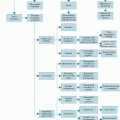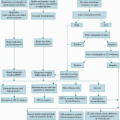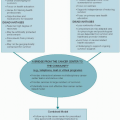This class of drugs includes the first-generation agents dolasetron, granisetron, ondansetron, tropisetron, and ramosetron and the second-generation agent palonosetron. They are given as oral, intravenous (IV), and transdermal preparations, with first-generation IV formulations considered equivalent to oral administration (
14). Previously, all first-generation agents had been considered to be of equal efficacy and used interchangeably (
15), though a meta-analysis (
16) has suggested that while ondansetron and granisetron are equivalent, granisetron is more effective than tropisetron. Data for ramosetron and dolasetron
are more limited. Side effects of 5-HT
3 receptor antagonists include constipation, headache, and a transient rise in liver enzymes. The Multinational Association of Supportive Care in Cancer (MASCC)/European Society for Medical Oncology (ESMO) guidelines laid out several principles in regard to 5-HT
3 receptor antagonists: the lowest therapeutic dose should be used; the adverse effects of this class are similar among agents; and the use of a single dose prior to chemotherapy remains the optimal integration of this class of medications.








